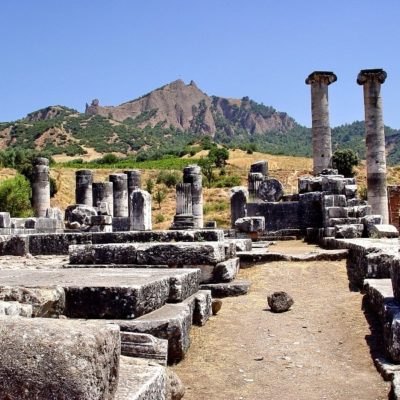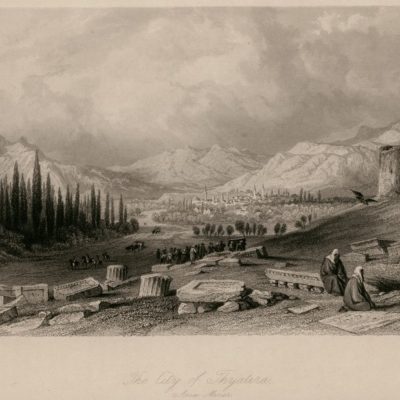The seller of purple what it means to us

Lydia was the only business woman mentioned in the Bible. We do not know much about her business practices. We do know that her hospitality shown to Paul becomes a guideline for all Christian business women of today. She was baptized and received the Holy Spirit and made sure her household also was baptized.
Acts 16:9-15 reminds us that Lydia was a successful business woman, a seller of purple cloth and a worshiper of the LORD God. She was a leader in her community because her hometown, the city of Thyatira, was famous for its dye works. She dyed wool for kings and was the first convert to Christianity in Europe.
The dye for purple was made from a juice found in miniscule amounts in shellfish. It would take hundreds of thousands of crustaceans to make just enough for a few yards of purple cloth. It would have been very expensive.
Royal purple dye was the most expensive and was worn mainly by the royalty. It was sought after by the rich in the ancient world. The Phoenicians guarded the process of making dye for centuries. They used the glands from murex snail. Fishermen of the Mediterranean Sea would work from small boats just off the shore. They lowered their netted baskets that were baited with cockles which were the food of the murex snails. (Reader’s, 1997).
Once on shore the fishermen would deposit the snails into rock pools, where they were kept alive until there were enough snails to work with. The purple dye was produced from a liquid secreted in the snails hypobranchial gland and would only yield a tiny droplet of liquid. It would take thousands of snails to make just one gallon of the purple dye. (Reader’s, 1997).
The next step would have been to break open the snails and the mixture would then steep in salt and soak for three days in vats. The dye then cooked for nine days. Because smaller snails would be crushed shells and all they impurities then had to be strained. This process had to be located outside of towns and away from where people lived because this process produced a foul odor. (Reader’s, 1997).
Potash and slaked lime were placed first in stone vats that were created for the purpose of making dye. Wool would sometimes be dyed before it was woven. The most valuable dye was purple. There was a cheaper kind of purple that was made with blue and then with red dye and it did give a cheaper kind of purple. (Nelson, 1980).
Once the dye is strained the dye was diluted with water and a single piece of fleece was dipped in the dye to test the color. Initially the wool would turn yellow it was the oxidation that caused the purple hue. The wool was immersed and allowed to soak and then wrung out saving the left over dye back into the vats. The Mediterranean sun would dry the wool and turn it into the deep shade of purple. (Reader’s, 1997).
Other plants have been used to create other colors for dying cloths. The Israelites used ground pomegranate rind to make the color yellow, the Phoenicians produced yellow by using safflower and turmeric. The color blue came from the indigo plant. The color red was produced from vegetables, reddish minerals, and insects. Isaiah talked about sins being glaring like scarlet that only the LORD God could wash out. (Isaiah 1:18). Black dye was from berries of the myrtle tree.
The color purple was more than just an indicator of wealth. It was also the symbol of political power. The more purple that was displayed on tunics and toga spoke volumes about the importance of a Roman senator even the Roman emperors wore toga’s that were entirely made of purple cloth.
Lydia was the only business woman mentioned in the Bible. We do not know much about her business practices. We do know that her hospitality shown to Paul becomes a guideline for all Christian business women of today. She was a well-known seller of purple. (Acts 16:14). She was not afraid of hard work and was honorable in her practices.
Not only was Lydia an example of being a business woman she is also an example of giving hospitality in serving the Lord. She opened her home for the saints of the LORD and her home became a center of Christian fellowship. She is a model for Christian women to follow in opening their homes to those Christians who are weary from their life journeys. How often have you had a need for peace and quiet so you could once again get close to hear the Word of the LORD?
What a righteous service we could provide. A safe sanctuary for the saints of the LORD: A place where there is no demands, no chaos, and no stresses. What is needed is just a clean place for the weary to spend a few hours or days to collect their direction where someone would feel welcome and safe. That is the example that Lydia showed us.
It is not about the food, the nice furniture, the largeness of the house. It is about the hospitality, the warmth, kindness, friendliness, and most of all the peace of the Lord. We live in painful times, trying times, and times when there is a great need for hearing the Lord.
“Be still, and know that I am God: I will be exalted among the heathen, I will be exalted in the earth.” (Psalm 46:10).
References:
Nelson. (1980). Nelson’s Bible Encyclopedia for the Family. Nashville, Thomas Nelson Publishers.
Reader’s Digest. (1997). Illustrated Dictionary of Bible Life & Times. Pleasantville, New York. Reader’s Digest Association
Cite Article Source
MLA Style Citation:
Holstein, Joanne “The seller of purple what it means to us:.” Becker Bible Studies Library Oct 2014.< https://guidedbiblestudies.com/?p=1723,>.
APA Style Citation:
Holstein, Joanne (2014, October) “The seller of purple what it means to us:.” Becker Bible Studies Library. Retrieved from https://guidedbiblestudies.com/?p=1723,.
Chicago Style Citation:
Holstein, Joanne (2014) “The seller of purple what it means to us:.” Becker Bible Studies Library (October), https://guidedbiblestudies.com/?p=1723, (accessed).


